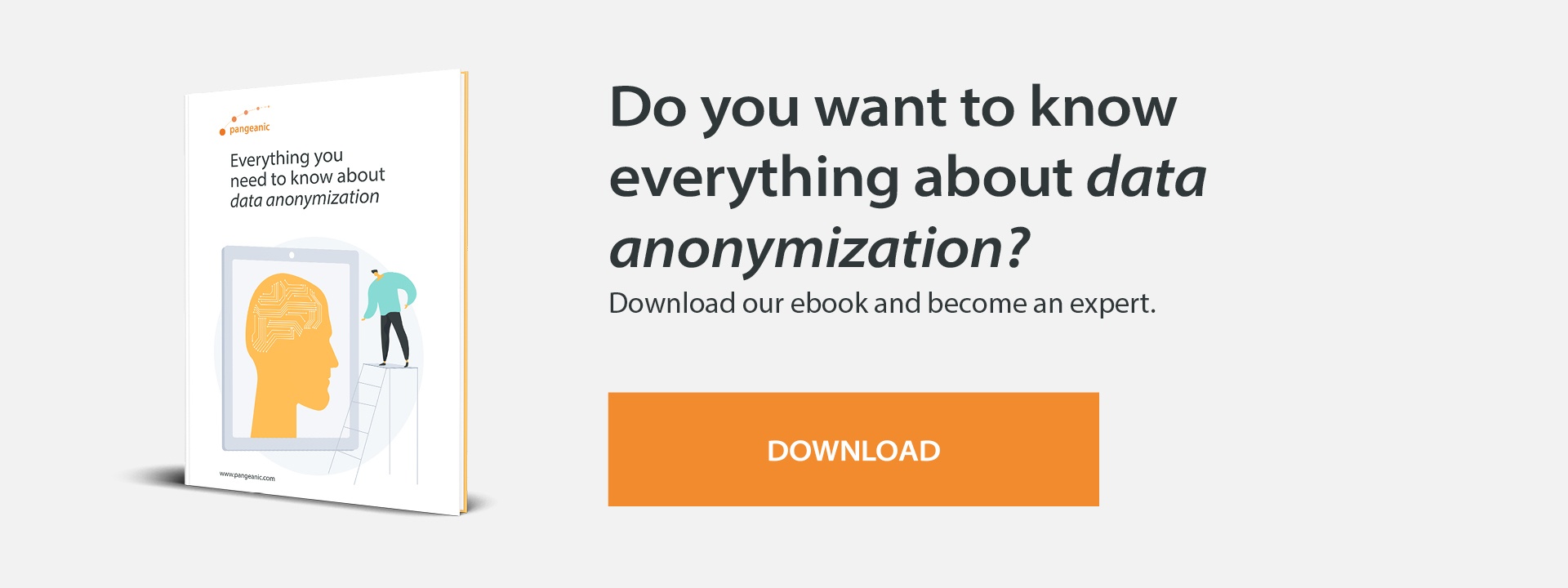-1.png)
Anonymizing databases is a mechanism that ensures the confidentiality of personal information and involves techniques in which identifiers that allow the data to be linked with it's subject are encrypted, deleted, replaced or swapped.
It applies in various industries, such as business, research, digital marketing, or in areas of software development. Different anonymization tools are available and the best one must be chosen depending on the company or organization's objectives and needs.
Why anonymize your databases?
The main objective of anonymization is ensuring data privacy. It is a security measure for protecting sensitive or confidential information against misuse and the risk of exploitation.
Therefore, by anonymizing a database, you are complying with the General Data Protection Regulation (GDPR) when processing or storing data belonging to EU citizens.
In addition, applying database anonymization techniques offers other benefits, such as:
-
Higher quality and consistency
-
Creating customer trust
-
Protecting company market share
-
Streamlining communication between companies or organizations
What data should be anonymized?
When managing a database it is important to identify what information should be anonymized. Not all data must be subjected to de-identification; there is data that can be stored without presenting a threat to the privacy of the individual.
No matter the industry that the company belongs to, the data to be anonymized remains de same:
-
Names
-
Mobile phone numbers
-
Credit card data (number, CVV, expiry date and tokens)
-
Passwords
-
Photographs
-
Addresses
-
Passport numbers, etc.
Related content:
Data Protection and Anonymization in the Context of Financial and Legal Services
The most effective database anonymization techniques
Some of the most effective anonymization techniques include the following:
-
Generalization: this technique deletes or replaces identifiers with a generic range, safeguarding the accuracy of the set.
-
Data masking: consists of concealing the identifier by inserting altered values. It is complemented by strategies such as encryption or character shuffling.
-
Data exchange: this database anonymization technique swaps the values of a certain attribute to reorganize them.
-
Pseudonymization: this method replaces identifiers with false values (pseudonyms), protecting statistical accuracy.
-
Data perturbation: consists of modifying personal data by introducing noise (random data) or using rounding techniques.
-
Synthetic data: this is a technique in which datasets are created with algorithms based on patterns obtained from values.
Best practices in data anonymization
Following these best practices will optimize your database anonymization results:
-
Automatically monitor and classify data that the company or organization collects, stores and uses in order to be aware of the type of confidential information to be anonymized.
-
Audit what data is used for. Knowing how information is used makes it easy to determine the database anonymization techniques to be adopted.
-
Establish the legal framework to be met by the anonymized database. Standards to be met must be determined in order for processes to be effective. For example, if personal data corresponds to individuals residing in California (USA), the anonymization provider must ensure compliance with the CCPA.
-
Evaluate the ability of database anonymization tools in relation to legal requirements, the type of personal data to be identified, and the current and future use of information.
Related content:
Latest developments and technology in personal data anonymization
Database anonymization tools
There are various database anonymization tools on the market. But keep in mind that not all of them offer the same anonymization options.
With Masker you can anonymize and pseudonymize easily and quickly using techniques such as: asterisks, substitution, ID tags, redaction and gaps. Not only is it possible to anonymize text, but this tool can also anonymize images, which is a very important feature. Also, if you need to anonymize or pseudonymize documents in different languages, this is a multilingual tool which has recently added Japanese to its wide variety of languages.
Related content:
The importance of anonymized databases
Anonymizing databases helps protect personal information (PII) that may be used to identify the data subject and allows you to meet with legal data privacy regulations and avoid data leakage.
In addition, an anonymized database allows data to be shared with third parties, such as public administration organizations, hospitals, and institutions like accountancy or law firms.
How can Pangeanic help you protect your data?
At Pangeanic, we have developed our own database anonymization tool powered by artificial intelligence, Pangea Masker. It meets all the various privacy standards (GDPR, HIPAA, APPI and CCPA/CPRA) and has the ability to mask and translate.
Pangea Masker offers the possibility to automatically identify personal information that serves as an identifier of an individual and to replace sensitive and confidential data through various database anonymization techniques.
We also led the open-source anonymization project MAPA, aimed at EU public administrations.
Our anonymization service can be used in e-commerce, legal services, insurance companies, the financial, medical, pharmaceutical and government industries, etc.
Contact us! At Pangeanic, we help you protect your customers’ identity and your business image.




